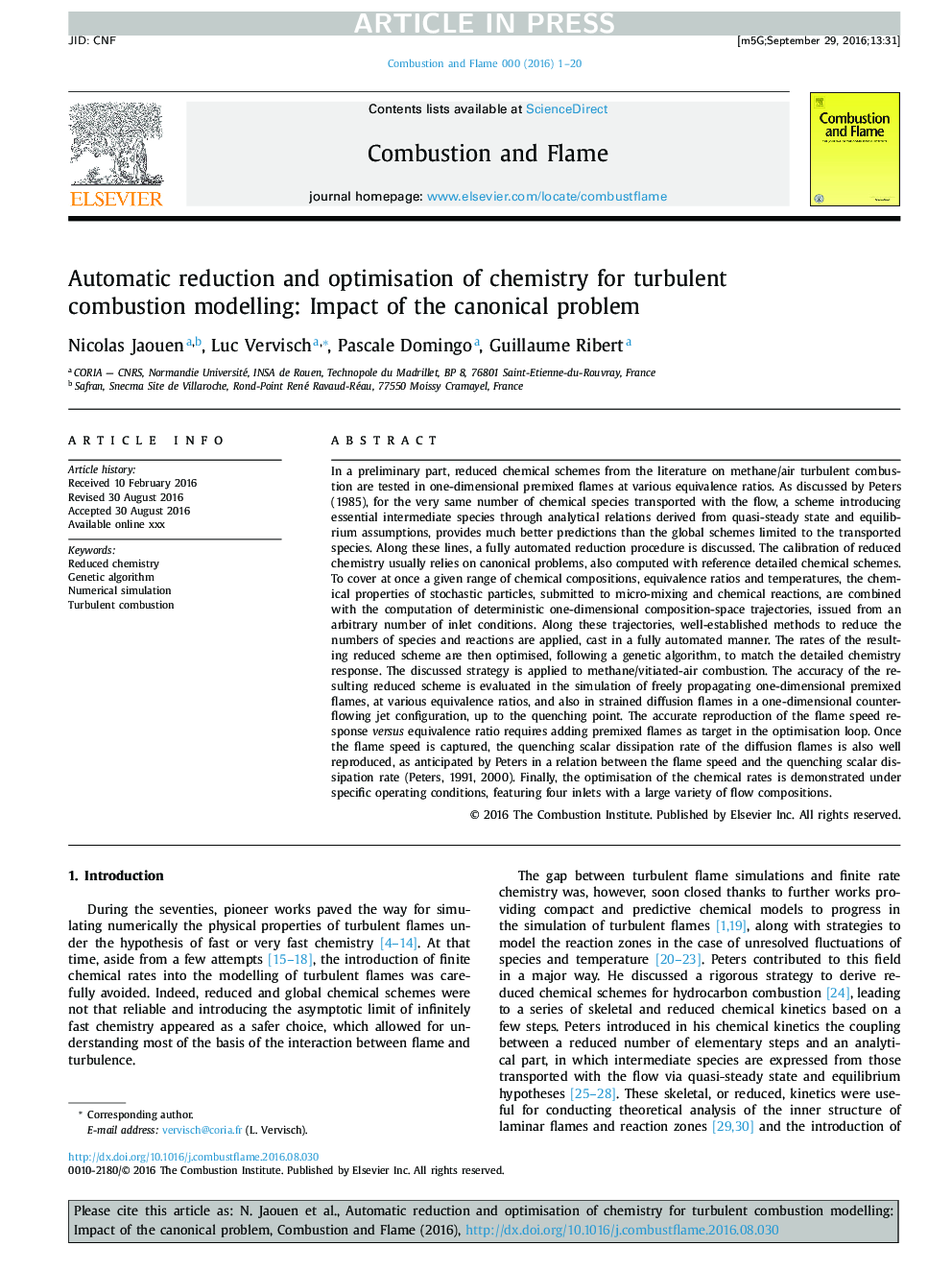| کد مقاله | کد نشریه | سال انتشار | مقاله انگلیسی | نسخه تمام متن |
|---|---|---|---|---|
| 4764522 | 1423562 | 2017 | 20 صفحه PDF | دانلود رایگان |
عنوان انگلیسی مقاله ISI
Automatic reduction and optimisation of chemistry for turbulent combustion modelling: Impact of the canonical problem
ترجمه فارسی عنوان
کاهش اتوماتیک و بهینه سازی شیمی برای مدل سازی احتراق آشفته: تاثیر مشکل کانونی
دانلود مقاله + سفارش ترجمه
دانلود مقاله ISI انگلیسی
رایگان برای ایرانیان
کلمات کلیدی
کاهش شیمی، الگوریتم ژنتیک، شبیه سازی عددی، احتراق متضاد،
موضوعات مرتبط
مهندسی و علوم پایه
مهندسی شیمی
مهندسی شیمی (عمومی)
چکیده انگلیسی
In a preliminary part, reduced chemical schemes from the literature on methane/air turbulent combustion are tested in one-dimensional premixed flames at various equivalence ratios. As discussed by Peters (1985), for the very same number of chemical species transported with the flow, a scheme introducing essential intermediate species through analytical relations derived from quasi-steady state and equilibrium assumptions, provides much better predictions than the global schemes limited to the transported species. Along these lines, a fully automated reduction procedure is discussed. The calibration of reduced chemistry usually relies on canonical problems, also computed with reference detailed chemical schemes. To cover at once a given range of chemical compositions, equivalence ratios and temperatures, the chemical properties of stochastic particles, submitted to micro-mixing and chemical reactions, are combined with the computation of deterministic one-dimensional composition-space trajectories, issued from an arbitrary number of inlet conditions. Along these trajectories, well-established methods to reduce the numbers of species and reactions are applied, cast in a fully automated manner. The rates of the resulting reduced scheme are then optimised, following a genetic algorithm, to match the detailed chemistry response. The discussed strategy is applied to methane/vitiated-air combustion. The accuracy of the resulting reduced scheme is evaluated in the simulation of freely propagating one-dimensional premixed flames, at various equivalence ratios, and also in strained diffusion flames in a one-dimensional counter-flowing jet configuration, up to the quenching point. The accurate reproduction of the flame speed response versus equivalence ratio requires adding premixed flames as target in the optimisation loop. Once the flame speed is captured, the quenching scalar dissipation rate of the diffusion flames is also well reproduced, as anticipated by Peters in a relation between the flame speed and the quenching scalar dissipation rate (Peters, 1991, 2000). Finally, the optimisation of the chemical rates is demonstrated under specific operating conditions, featuring four inlets with a large variety of flow compositions.
ناشر
Database: Elsevier - ScienceDirect (ساینس دایرکت)
Journal: Combustion and Flame - Volume 175, January 2017, Pages 60-79
Journal: Combustion and Flame - Volume 175, January 2017, Pages 60-79
نویسندگان
Nicolas Jaouen, Luc Vervisch, Pascale Domingo, Guillaume Ribert,
